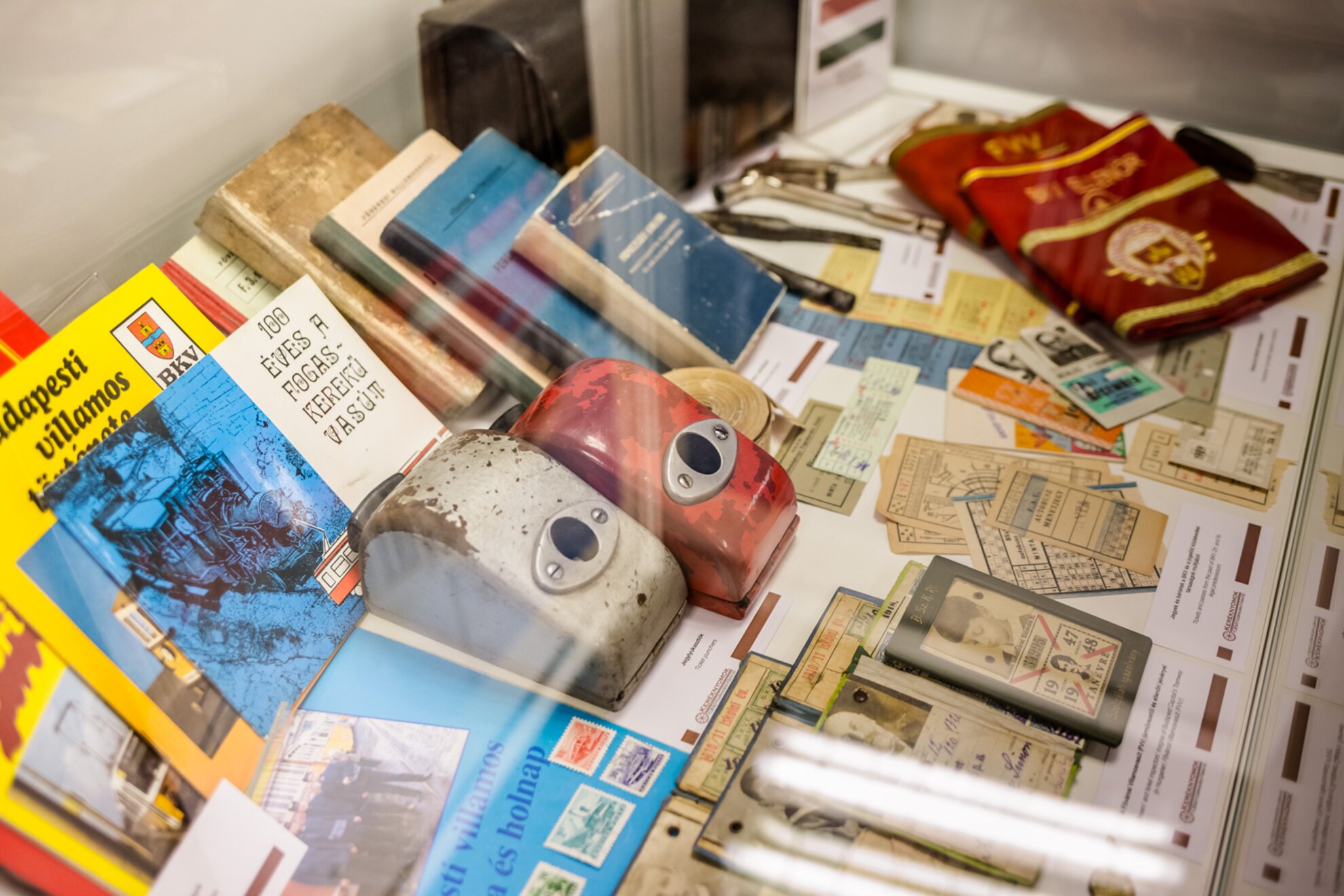Within the underpass of Budapest’s Deák Ferenc Square, a historic tunnel of Budapest’s 121-year-old Millennium Metro serves as a subterranean museum presenting the history of the city’s public transport, displaying wooden subway cars of decades past. However, the Underground Railway Museum’s permanent exhibition is now enhanced with a short-term showcase highlighting the heritage of transit services with revealing collections of varied transport-themed trinkets from 12 countries, including old passes from Spain, antique maps from Australia, and miniature versions of Hungary’s vintage vehicles.
Anyone who descends into ’s underground passage walks past the BKK information counter behind a contemporary glass wall, suggesting an ordinary bureau of Budapest’s public-transport company. However, this subterranean office not only serves as a ticket counter, but it is also the entry hall to the Underground Railway Museum that’s accessible through a separate door opening from the same BKK info point. When we step into this obscured exhibition area on an ordinary day, a concealed viewing space unfolds before our eyes, filled with in-depth information about Budapest’s public-transport history, including a display of well-preserved wooden subway cars that are elegantly parked on the century-old rails of the original Deák Square station of the .
This summer, as an addition to the museum’s time-transcending displays, this concealed chamber now houses a new temporary exhibition that presents intriguing mementos of public-transport history from around the world, including now-retro relics that were once regularly used by transit-service staff and passengers across Australia, Austria, Belgium, Brazil, Czech Republic, Germany, Hungary, Italy, United Kingdom, Russia, Spain, and Sweden. Open for visitors through October 31st, the “Traces – Heritage highlights of international public transport” exhibit boasts a wide range of displays, making this hidden-gem showcase an especially attractive destination for history buffs who want to learn about urban conveyances and what the cityscape used to be like in Berlin, Manchester, Prague, Madrid, Moscow, and Stockholm.

Among the showcased pieces, we stumble upon pictures of the Wiener Straßenbahn (Vienna’s trams) and varied models of the staff’s service caps from the 1970s, the menu that was offered in the first-class section aboard Southampton’s Eurostar, historic illustrations of wooden trams traversing Brussels, insignia from the Stockholm public-transport authority, and miniature versions of a variety of rolling relics in the Hungarian capital.
Meanwhile, a touchscreen is available near the museum’s entrance to highlight snippets of international public-transportation history, and by navigating the menu structure we find additional English-language information about the countries that submitted objects for this mini exhibition, including details of Australia’s early railway development, the evolution of transit services in Manchester, and a series of digital images portraying Spain’s state-of-the-art vehicles.

Budapest's public-transport company strives to , and with this new exhibition, viewers can travel back in time beyond the Hungarian capital, as well.




